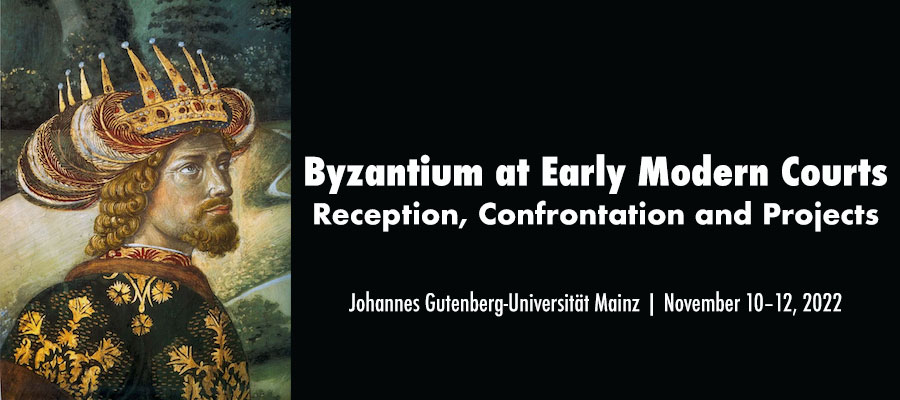Byzantium at Early Modern Courts: Reception, Confrontation and Projects, Johannes Gutenberg-Universität Mainz, November 10–12, 2022
Byzantium was present at early modern courts in different ways. Not only the classical Roman period, but also the late antiquity and early Byzantine period, i.e. the era of Christian emperors, offered multiple points of reference for the representation of early modern rulership. Women such as the saint Empress Helena offered points of reference to princesses, as can be seen in the foundation of the order of the Starry Cross by the then Dowager-Empress Eleonora Gonzaga-Nevers in 1668. Byzantine themes were also present at courts in the fine arts as well as the court opera.
An entirely different area of engagement with the Byzantine heritage was the confrontation with the Ottoman Empire, which saw itself as a successor to the Byzantine Empire. The sultans not only resided in the capital of Constantinople since 1453, they also laid claim to the imperial office, which they, in turn, denied the Habsburgs until the 17th century. From the second half of the 17th century onwards the military balance of power shifted significantly. The Ottoman Empire was now in a more defensive position and at times the renewal of the Byzantine Empire was envisaged, like with the “Greek project” of Catharine II of Russia in the 1780s.
Without question, the Orthodox Church stood in the Byzantine tradition. Early modern rulers also found opportunities and necessities to confront and discuss the Byzantine heritage on this level. The most obvious examples are the Muscovite Tsars and their claim to a Third Rome based on the translatio imperii from a Second to a Third Rome, but also Western European powers ruling over an Orthodox population did this, such as, since the 13th century the Republic of Venice and, especially since the 1680s, the Habsburg Empire. The Patriarch of Constantinople’s claim to be an “Ecumenical patriarch” posed a bothersome limitation to the papal primacy of the Roman Curia, while Protestant rulers and their theologians might have perceived the patriarch as a potential ally against Rome.
This conference aims to examine these and other dimensions of engagement of early modern courts with Byzantium and its heritage up to the 18th century.
Possible fields of research might include:
- The various forms (fine arts, opera, literature etc.) of representation of rulership and propaganda
- Knowledge of Byzantium
- Influence of Byzantium/reception on politics
This call for papers invites established as well as young researchers working on the topics discussed above to submit their contributions. The conference will be held in German and English. Travel and accommodation expenses will be covered by the Leibniz-WissenschaftsCampus: Byzantium between Orient and Occident.
